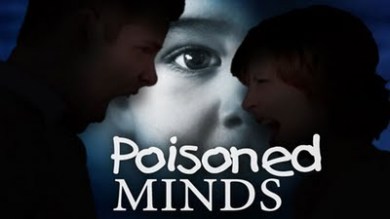By: Jake Morphonios
Imagine…
You wait for your former spouse to return your son following a schedule weekend visit. When your child isn’t returned, you go to the other parent’s home only to discover that the apartment has been vacated.
The physiological response in each of these situations is the same. Your heart begins to pound and your adrenaline starts to surge through your veins as the realization dawns that your children are gone. In an instant your brain considers possible explanations, but they each defy logic. Your brain already knows what your heart is desperately trying to deny. Your children have been kidnapped.
There are few horrors that can rival the experience of having one’s child kidnapped. Movies and television shows sensationalize child abduction. The nightly news further distorts correct understanding of child abduction by only reporting on the most dramatic of cases, for example, the kidnapping of Elizabeth Smart. There exists, however, a less-glamorous form of child abduction which is perpetrated by the child’s own parent.

Parental Kidnappings
Each year there are more than 350,000 child abductions in America. The vast majority of these kidnappings are perpetrated by one of the child’s parents. The official term for this type of crime is “parental child abduction”, but it is also referred to as a “child kidnapping” or “child snatching”. Regardless of the terminology, the fact that the child is taken by the other parent does not diminish or negate the raw emotional trauma inflicted upon the other parent.
Parental kidnapping is the unlawful abduction of a child by one parent which deprives the other parent of their lawful custody of the child. In divorce situations, the abductor may be the custodial or the non-custodial parent. This means that even if the abductor is the custodial parent or primary caregiver, if the abduction deprives the other parent of his or her court ordered visitation time then the custodial parent is guilty of parental child abduction.
The US Department of Justice (DOJ), Office of Juvenile Justice and Delinquency Prevention conducted an intensive and thorough research study on child abduction in America. The project is called the National Incidence Studies of Missing, Abducted, Runaway, and Thrownaway Children (NISMART). The section that focused specifically on children abducted by family members is called NISMART-2. This article extensively references the NISMART-2. The original study may be found at: http://ojjdp.ncjrs.org
Defining Parental Child Abduction
“For the purposes of NISMART-2, family abduction was defined as the taking or keeping of a child by a family member in violation of a custody order, a decree, or other legitimate custodial rights, where the taking or keeping involved some element of concealment, flight, or intent to deprive a lawful custodian indefinitely of custodial privileges.”
The NISMART-2 elaborates on the definition above by further defining the following terms:
- Taking: Child was taken by a family member in violation of a custody order or decree or other legitimate custodial right.
- Keeping: Child was not returned or given over by a family member in violation of a custody order or decree or other legitimate custodial right.
- Concealment: Family member attempted to conceal the taking or whereabouts of the child with the intent to prevent return, contact or visitation.
- Flight: Family member transported or had the intent to transport the child from the State for the purpose of making recovery more difficult.
- Intent to deprive indefinitely: Family member indicated intent to prevent contact with the child on an indefinite basis or to affect custodial privileges indefinitely.
Conceptualizing the Problem
Of the 203,900 parental child abduction cases studied, 57% were labeled as “caretaker missing”, meaning that the victimized parent did not know where the child was for at least 1 hour, became alarmed and searched for the missing child. However, the NISMART-2 reveals:
“It is possible for a child to have been unlawfully removed from custody by a family member, but for that child’s whereabouts to be fully known. Thus, a child can be abducted but not necessarily missing.”
In fact, the study found that 43% of the children kidnapped were not thought of as “missing” by the victimized parent because the child’s whereabouts were known to the victim parent.
“Although the family abductions described in this study typically had certain disturbing elements such as attempts to prevent contact or alter custodial arrangements permanently, they did not generally involve the most serious sorts of features associated with the types of family abductions likely to be reported in the news. Actual concealment of the child occurred in a minority of episodes. Use of force, threats to harm the child and flight from the State were uncommon. In contrast to the image created by the word ‘abduction,’ most of the children abducted by a family member were already in the lawful custody of the perpetrator when the episode started. In addition, nearly half of the family abducted children were returned in 1 week or less.”
Even if the child is not considered missing, the abduction is still considered child abuse because of the damage that it inflicts upon the child. The NISMART-1 found that, “family abduction can result in psychological harm to the child” and the NISMART-2 states that “family abductions constitute an important peril in the lives of children it is important to remember that the potential harm to family abducted children exists whether or not they are classified as missing”.

Characteristics of Parental Abductions
Location and Season. 73% of parental abductions took place in the child’s own home or yard, or in the home or yard of a relative or friend. Children were removed from schools or day care centers in only 7% of the cases. In 63% of the cases, the children were already with the abductor in lawful circumstances immediately prior to the abduction.
Police Contact. In 40% of all cases, the aggrieved parent did not contact the police to report the abduction. The study found a number of reasons for this, but the majority of responses indicated that the parent did not believe that the police would intervene in the matter because the child’s whereabouts were known, they were in the care of a legal guardian, and it did not appear that the child was being harmed. The highest percentage of abductions took place during the summer.
Ages. 45% of abductors were in their 30’s. 44% of abducted children were younger than age 6.
Indicators of serious episodes. “The use of threats, physical force, or weapons was relatively uncommon in family abductions.” 17% were moved out of State with the intent to make recovery more difficult. 44% were concealed, at least temporarily, from the victimized parent-+. 76% included attempts to prevent contact. 82% included intent to permanently affect the custodial privileges of the aggrieved parent.
Conclusion
Parental child abduction is the unlawful kidnapping of a child by one parent which deprives the other parent of his or her lawful custodial rights. This kind of child snatching not only victimizes the other parent, but it is also a serious form of child abuse.
When the abducting parent chooses to go underground or flees the state or country, recovery of the child becomes exceptionally difficult – and sometimes impossible. Because of this, if you suspect that your child is at risk of abduction you must act now. There are steps you can take to reduce the risk of abduction, as well as actions designed to make the recovery of your child far more likely.
Published by: ABP World Group International Child Recovery Service
Visit our web site at: www.abpworld.com
Follow our updates on Twitter and Facebook









